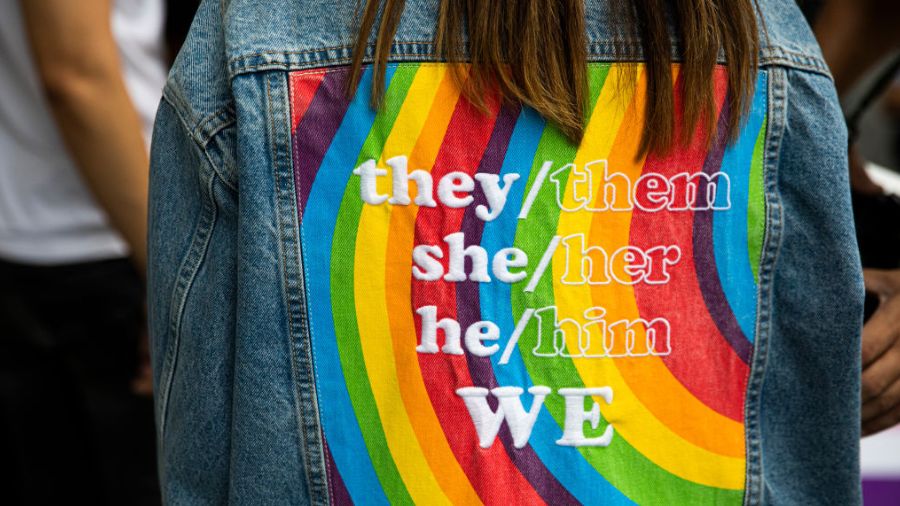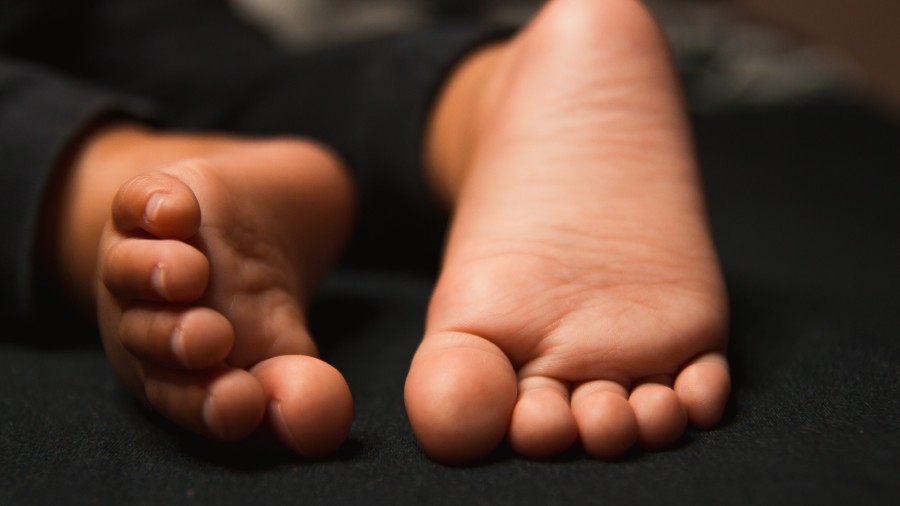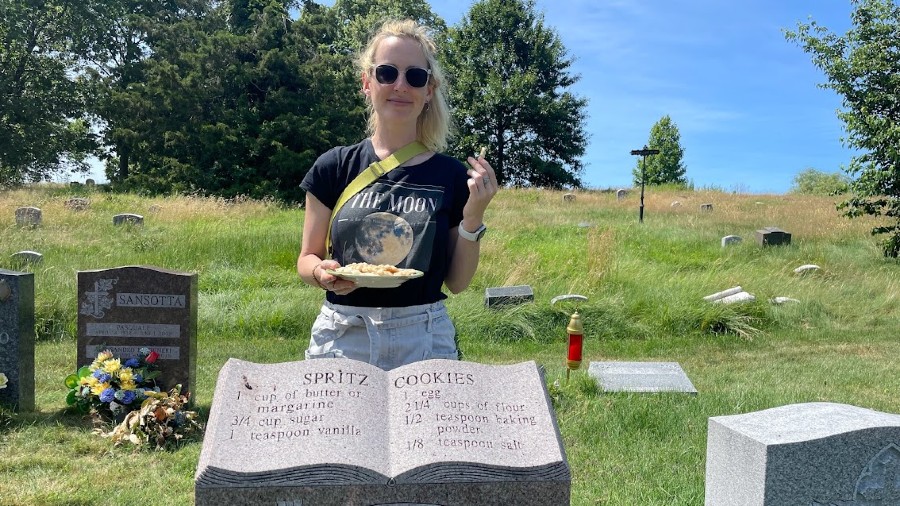NFTs are great for artists, bad for the environment
Apr 16, 2021, 5:36 AM | Updated: Apr 17, 2021, 8:30 am

Sam Clover (Planttdaddii) is a digital sculptor who has been selling NFTs of her work for about $10,000. Title: 'unconditional' (Art courtesy of Sam Clover, Planttdaddii)
(Art courtesy of Sam Clover, Planttdaddii)
Seattle’s Sam Clover is a digital sculptor, known as Planttdaddii, who was struggling to pay her bills as a working artist.
“Client work was really not paying that well,” Clover said. “It was very, like, penny pinching all the time, and stress all the time.”
But in October, she started selling some of her colorful, ethereal digital art work as NFTs.
“My last two pieces sold for around 10k on [the NFT marketplace] SuperRare,” she said. “It’s really overwhelming, and I’ve built some really incredible connections with collectors.”
Introducing the world’s newest, most exciting, incredibly confusing digital art selling space: NFT, Non Fungible Tokens. Artists are using NFTs to upload their digital work onto a blockchain, which is basically a database, to permanently cement that they are the original owner of a file. It can be a meme, a song, a movie, visual art — anything digital. All of these things can be replicated over and over online, but the NFT proves ownership.
Then the artist can put the NFT up for sale in a digital marketplace, where it will most likely be bought by a collector using a digital currency called Ethereum, similar to Bitcoin. NFTs may still be a mystery to most but, meanwhile, creators are cashing in.
Twitter CEO Jack Dorsey sold his very first tweet as an NFT for $2,915,835.47. In March, an artist known as Beeple sold a digital collage for $69 million. Before getting into the NFT market, his biggest sale was a $100 print.
“If you feel like its a little hard to understand, you’re not alone,” Trevor Hawkins said. “I was just like the rest of the world a few weeks ago, frantically Googling what an NFT actually is.”
Hawkins is the first filmmaker in the world to release a movie as an NFT.
“We released 1,000 shares and when we listed them they were $1,000 apiece. Anyone who buys one of those shares will own one thousandth of the movie and they can buy as many as they’d like,” Hawkins explained. “And then once we’ve sold 501 of those, we are no longer the majority shareholders ourselves. Really, the fate of the movie will be in the hands of the majority.”
Hawkins said it’s difficult to get an indie film distributed, so he took a risk on the new NFT trend, hoping that the novelty of being the first NFT film could make him more money than going a traditional route. He plans to premiere his film Lotawana exclusively to an NFT audience.
“This is sort of a new, user generated territory,” said Hawkins, from his home in Missouri. “Not a lot of money gets trickled down to the artist at the end of the day, and if artists can take control of their own revenue stream and their own releasing through this whole NFT space, then you just cut out the middle man and artists can make a lot more money off of their own work.”
Netflix co-creator shares entrepreneurial wisdom: ‘The best time is now’
Unlike traditional art sales, every time an NFT is resold, the artist gets a cut.
“The industry standard right now is 10%,” Hawkins said. “So anytime someone buys one of our NFTs, turns around and sells it, we will always get a 10% cut of that resale. Forever.”
For Seattle game developer and artist Steve Ibsen, the NFT space allowed him to reclaim his work.
“I have kind of a unique situation where 17 years ago I made a viral video called The Kitty Cat Dance,” Ibsen said. “It was 2004, and by 2005, tons of people had put it on YouTube as their own. Finally, somebody claimed it was theirs and monetized it and I was completely left behind. Shirts were showing up at Hot Topic, and on TikTok it’s uploaded 100,000 times. There was not a lot I could do, I really lost control of my work.”
“So I realized this is a really great opportunity for me to take the original files nobody else would have because they’re not the original creators, and I minted them as an NFT and added it to an Ethereum blockchain to say, ‘Hey, this is the original file,’ in an effort for me to stake a claim to my work,” he said.
Ibsen sold The Kitty Cat Dance NFT for $3,500, a sum he’s very satisfied with.
But there are downsides to NFTs, namely that they are environmentally unsustainable. James Coupe is a professor in the department of digital art and experimental media at the University of Washington.
“Tokens on the blockchain rely on massive amounts of electricity to encrypt and maintain them,” Coupe said. “People said 10 seconds of maintaining an NFT would be equivalent to two years of electric bills for your house. So it’s an incredible amount of environmental impact. That’s something that is certainly dissuading many artists from getting involved with them.”
So what is the future of NFT? Will it be like Bitcoin, embraced only by a small part of the population, or will it become as ubiquitous as Google?
“I don’t know if it’s a bubble, I don’t know if it’s already popped, I don’t know if it’s growing,” Ibsen said. “It just seems different day to day. There is just so much excitement. But I don’t see it being sustainable unless the technology behind it changes.”
Listen to Rachel Belle’s James Beard Award nominated podcast, “Your Last Meal,” featuring celebrities like Death Cab For Cutie’s Ben Gibbard, Rainn Wilson, and Greta Gerwig. Follow @yourlastmealpodcast on Instagram!













